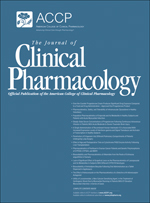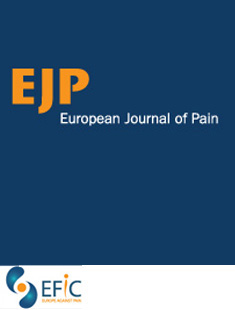
Modern History of Medical Cannabis: From Widespread Use to Prohibitionism and Back




“There has been a dramatic surge in the interest of utilizing cannabis for epilepsy treatment in the US. Yet, access to cannabis for research and therapy is mired in conflicting regulatory policies and shifting public opinion. Understanding the current state of affairs in the medical cannabis debate requires an examination of the history of medical cannabis use. From ancient Chinese pharmacopeias to the current Phase III trials of pharmaceutical grade cannabidiol, this review covers the time span of cannabis use for epilepsy therapy so as to better assess the issues surrounding the modern medical opinion of cannabis use. This article is part of a Special Issue titled Cannabinoids and Epilepsy.”

“Targeting the CB2 receptor afforded neuroprotection in SOD1G93A mutant mice, a model of amyotrophic lateral sclerosis (ALS).
The neuroprotective effects of CB2 receptors were facilitated by their up-regulation in the spinal cord in SOD1G93A mutant mice.
Herein, we have investigated whether a similar CB2 receptor up-regulation, as well as parallel changes in other endocannabinoid elements, are evident in the spinal cord of dogs with degenerative myelopathy (DM), caused from mutations in the superoxide dismutase 1 gene (SOD1).
In summary, our results demonstrated a marked up-regulation of CB2 receptors occurring in the spinal cord in canine DM, which was concentrated in activated astrocytes.
Such receptors may be used as a potential target to enhance the neuroprotective effects exerted by these glial cells.”

“The medical properties of Cannabis sativa is known for centuries.
Since the discovery and characterization of the endogenous cannabinoid system, several studies have evaluated how cannabinoid compounds and, particularly, how the modulation of the endocannabinoid (eCB) system influences a wide range of functions, from metabolic to mental disorders. Cannabinoids and eCB system often exert opposite effects on several functions, such as anxiety. Although the mechanisms are not completely understood, evidence points to different factors influencing those effects.
In this chapter, the recent advances in research about the relationship between eCB system and anxiety disorders in humans, as well as in animal models, will be discussed. The recent data addressing modulation of the eCBs in specific brain areas, such as the medial prefrontal cortex, amygdaloid complex, bed nucleus of stria terminalis, hippocampus, and dorsal periaqueductal gray, will be summarized. Finally, data from animal models addressing the mechanisms through which the eCB system modulates anxiety-related behavior dependent on stressful situations, such as the involvement of different receptors, distinct eCBs, modulation of neurotransmitters release, HPA axis and immune system activation, and plastic mechanisms, will also be discussed.”

“Anecdotal accounts of the use of topical extracts from the cannabis plant being used on open wounds date back to antiquity. In modern times, cannabinoid therapies have demonstrated efficacy as analgesic agents in both pharmaceutical and botanical formats. Medical cannabis (MC), also known as medical marijuana,…
The endogenous cannabinoid system, consisting of cannabinoid receptors and their endogenous ligands, is ubiquitous throughout the human body. Available research shows that cancer cells express higher levels of the cannabinoid receptors, CB1 and CB2, relative to their noncancer counterparts, while also demonstrating an overall state of upregulation. Human in vitro studies, using nonmelanoma skin lines, have demonstrated direct induction of tumor cell apoptosis and inhibition of tumor-related angiogenesis, both by way of activation of cannabinoid receptors.
The analgesic outcomes observed in this case are supported by the results of a recent systematic review and meta-analysis of cannabinoids for medical use. Unlike intact skin, which is polar and hydrophilic, wounds lack epithelial coverage and are nonpolar and lipophilic. Therefore, lipophilic compounds such as the THC and CBD cannabinoids may be readily absorbed through cutaneous wounds.
Before the use of topical MC oil, the patient’s wound was growing rapidly. Yet, after a few weeks, a modest regression of his malignant wound was observed while the patient used topical MC. This secondary outcome suggests that topical MC may promote antineoplastic activity as per the findings of Casanova et al.
In summary, this is the first case report to demonstrate the potential for MC to provide effective pain and symptom management in the setting of malignant wounds. The rapid onset of analgesia after topical placement suggests that the effects were mediated through absorption of the THC and CBD cannabinoids that subsequently interacted with peripheral nociceptors, immune cells, and cancer cells. The postapplication analgesia may be because of the gastrointestinal absorption of ingested residual MC oil. This case suggests that MC delivered in vaporized and topical oil formats warrants further investigation in human malignancy, including randomized controlled trials capable of establishing long-term efficacy, optimal dosage, schedules of administration, mixture composition, and safety.”
http://www.jpsmjournal.com/article/S0885-3924(16)30328-1/fulltext
“Can Cannabis Oil Help Heal Wounds?” http://www.livescience.com/57500-can-medical-cannabis-help-heal-wounds.html
“Oral cancer patient, 44, claims cannabis oil helped to shrink a hole in his cheek that was caused by the disease” http://www.dailymail.co.uk/health/article-4124752/Oral-cancer-patient-44-claims-cannabis-oil-helped-shrink-hole-cheek-caused-disease.html
“Cannabis Oil Shows Potential To Heal Cancer Wounds Fast” http://www.healthaim.com/cannabis-oil-shows-potential-heal-cancer-wounds-fast/71395

“Legalization of cannabis’ medicinal use is rapidly increasing worldwide, raising the need to evaluate medical implications of cannabis. Currently evidence supports cannabis and its active ingredients as an immune-modulating agents, affecting T-cells, B-cells, Monocytes and Microglia-cells, causing an overall reduction in pro-inflammatory cytokine expression and an increase in anti-inflammatory cytokines. Due to the supporting evidence of cannabinoids as an immune-modulating agent, research focusing on cannabinoids and autoimmunity has emerged. Several clinical trials in multiple sclerosis, inflammatory bowel disease and fibromyalgia suggest cannabis’ effectiveness as an immune-modulator. However, contradicting results and lack of large scale clinical trials obscure these results. Though lacking clinical research, in-vitro and in-vivo experiments in rheumatoid arthritis, diabetes type 1 and systemic sclerosis, demonstrate a correlation between disease activity and cannabinoids.”

“Does signaling via the cannabinoid (CB1) receptor play a role in the pathogenesis of endometriosis in a mouse model?
Clarifying the function and regulation of CB1 and its molecular interactions with endogenous ligands, and how endocannabinoids levels are regulated in women with endometriosis, represent critical areas of research for the potential development of a novel medical treatment of the disease.”

“Prevalence of psychiatric disorders continues to rise globally, yet remission rates and patient outcome remain less than ideal. As a result, novel treatment approaches for these disorders are necessary to decrease societal economic burden, as well as increase individual functioning.
The recent discovery of the endocannabinoid system has provided an outlet for further research into its role in psychiatric disorders, because efficacy of targeted treatments have been demonstrated in medical illnesses, including cancers, neuropathic pain, and multiple sclerosis.
The present review will investigate the role of the endocannabinoid system in psychiatric disorders, specifically schizophrenia, depressive, anxiety, and posttraumatic stress disorders, as well as attention-deficit hyperactivity disorder.
Controversy remains in prescribing medicinal cannabinoid treatments due to the fear of adverse effects. However, one must consider all potential limitations when determining the safety and tolerability of cannabinoid products, specifically cannabinoid content (ie, Δ-tetrahydrocannabinol vs cannabidiol) as well as study design.
The potential efficacy of cannabinoid treatments in the psychiatric population is an emerging topic of interest that provides potential value going forward in medicine.”

“Cannabis is one of the earliest cultivated plants.
Cannabis of industrial utility and culinary value is generally termed as hemp.
Conversely, cannabis that is bred for medical, spiritual and recreational purposes is called marijuana.
The female marijuana plant produces a significant quantity of bio- and psychoactive phytocannabinoids, which regained the spotlight with the discovery of the endocannabinoid system of the animals in the early 90’s.
Nevertheless, marijuana is surrounded by controversies, debates and misconceptions related to its taxonomic classification, forensic identification, medical potential, legalization and its long-term health consequences.
In the first part, we provide an in-depth review of the botany and taxonomy of Cannabis. We then overview the biosynthesis of phytocannabinoids within the glandular trichomes with emphasis on the role of peculiar plastids in the production of the secreted material. We also compile the analytical methods used to determine the phytocannabinoid composition of glandular trichomes.
In the second part, we revisit the psychobiology and molecular medicine of marijuana. We summarize our current knowledge on the recreational use of cannabis with respect to the modes of consumption, short-term effects, chronic health consequences and cannabis use disorder.
Next, we overview the molecular targets of a dozen major and minor bioactive cannabinoids in the body. This helps us introduce the endocannabinoid system in an unprecedented detail: its up-to-date molecular biology, pharmacology, physiology and medical significance, and beyond.
In conclusion, we offer an unbiased survey about cannabis to help better weigh its medical value versus the associated risks.”

“Cannabis can alleviate pain of various etiologies.
This study assessed the effect of cannabis on motor symptoms and pain parameters in patients with Parkinson’s disease (PD).
Cannabis improved motor scores and pain symptoms in PD patients, together with a dissociate effect on heat and cold pain thresholds. Peripheral and central pathways are probably modulated by cannabis.
Quantitative sensory test results are significantly altered following cannabis consumption in patients with PD. Cannabis probably acts on pain in PD via peripheral and central pathways.”